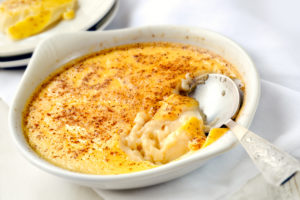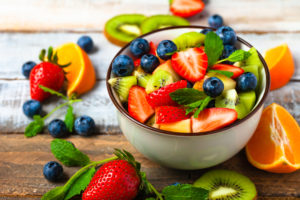Baby food comes in stages. In fact, most food brands would classify your baby’s food into 4 groups. This age-based classification is really important because your child’s diet must be perfectly suited to meet his/her nutritional demands.
In this article, you’d find all the info you need about stage 4 baby food; the ingredients, recipes, and things to note while feeding your stage 4 baby.
Let’s Get Started!
Table of contents

First, What Are The Baby Food Stages?
As we mentioned earlier, baby food comes in stages.
These age-based baby food stages are specially designed to ensure that your little one gets all the nutrients needed for a healthy life in the right quantity and quality. However, it is important to remember that there is no ultimate guide for grouping baby food.
Most pediatricians and nutrition experts group baby food in the following manner:
- Stage 1 Baby Food: These are single-ingredient meals like rice, oatmeal, fruits, or veggies. Most times, they are pureed into a smooth consistency that’s easy to put in your baby’s mouth. In fact, these stage 1 baby meals are really easy to digest because they are often thin and runny.
- Stage 2 Baby Food: By this time, your little one’s digestive system is now able to handle basic food combinations. At this stage, most parents begin to combine two or more simple ingredients to create the perfect stage 2 baby food. It is also important to note that stage 2 meals are thicker than stage 1 baby food options.
- Stage 3 Baby Food: These meals have more texture, solid components, and are more chewable than stage 2 meals. The right stage 3 baby meal would teach your child how to chew because they are often thicker and chunkier.
- Stage 4 Baby Food: In plain terms, stage 4 meals are ‘adult meals in baby portions‘. A stage 4 baby can actually eat the same food you eat (in little portions). This is because his/her digestive system is developed enough to handle most adult meals.
Although these baby food stages are age-based, each child is unique and the timelines may differ from child to child. As your child navigates through the various baby food stages, it is important to monitor the milestones, and let him/her set the pace regarding introducing solids.
Stage 4 Baby Food Recipes
Before starting stage 4 meals, your baby should be able to:
- Sit up with minimal assistance
- Take food from a spoon
- Rest between bites
- Stop eating when full
Most times, babies tick all these boxes at the end of their first year (or the beginning of their second). To help you find the right meal for your stage 4 baby, we’ve compiled the following stage 4 baby food options for you:
1. Egg Custard
Eggs are a rich source of protein and other nutrients essential for your child’s growth. You can either boil, fry, or steam them for your little one. We recommend encouraging your toddler to eat the entire egg, especially the yolk, whenever you boil it. You can also scramble the egg, steam it, or make an egg custard.

What You Need To Make Egg Custard:
- 2 eggs
- 2 cups of milk
- 4 tablespoons of sugar
How To Prepare:
Dissolve the sugar in water. Add the egg and milk then whisk thoroughly. After this, you can steam the mixture for about 10-15 minutes.
Once this is done, your baby’s egg custard is ready to be served.
2. Fish and Meat
Once your baby is ready for stage 4 meals, you can introduce fish or meat as another food option. Most stage 4 babies can take:
- Lean meat
- Salmon
- Chicken
- Sardine
3. Beans
This is another important protein source for your baby. However, you should ensure that your baby’s beans are soft or mashed to make it really easy for him/her to chew.

4. Yoghurt
This is a great source of calcium that builds your baby’s bones. In addition, yogurt contains proteins that repair body tissues and vitamins that supply essential antioxidants.
To spice things up, you can provide different flavors of yogurt.
5. Fruit Salads
Fruit salads provide an effective way of introducing your child to different flavors at a young age. You can mix varieties of fruits like banana, apples, pineapples, watermelon, and others into a fruit salad that is attractive and tasty.

You can even spice things up by making a classic banana pancake.
What You Need To Make A Banana Pancake:
- 2 ripe bananas
- 1 cup of milk
- 2 tablespoons of vegetable oil
- 1 cup of flour
- 2 tablespoons pf baking powder
- 1 tablespoon of white sugar
- ¼ teaspoon salt
Procedure:
Mix the flour, sugar, baking powder, and salt together in a bowl. In another bowl, mix the egg, milk, vegetable oil, and bananas. Stir the flour mixture into the banana mixture. Place a lightly oiled frying pan over medium heat.
Then scoop the batter into it and cook until the pancakes are golden brown on both sides.
6. Grains
Now is a great time to introduce your child to cereals. Important cereals to try out include:
- Wheat
- Millet
- Oats
- Rice
- Maize.
You can also offer slices of bread and crackers.
Things to Note While Feeding Your Toddler
- You are the first influence on your child: This means from that very young age, your child is watching you and will most likely develop the attitudes you display. Therefore, cultivating a healthy eating habit and following a healthy diet would also help your child acquire healthy eating habits.
- You know what is best for your child: Each child is unique. In fact, what works for one baby may not work for his/her sibling. Carefully observe and decide what is best to eat, when to eat and where to eat.
- Don’t force it: If your child is rejecting a particular food, it does not mean he or she is being picky, they’re just not familiar with the food yet. Instead of forcing it, serve the meal in small, interesting looking portions and large time intervals.
- Plan Well: You can draw up a regular meal schedule that gives your child enough to eat each time. Having a regular time to eat prepares your child’s mind for “breakfast, lunch or dinner time.”
- Don’t use food as a reward: This will make your child eat only in response to job done or some other achievements like a good potty training day. In most cases, using food as a reward promotes unhealthy eating habits in children.
- Use child-size cutlery: This helps to curb excessive eating and also helps you to feed him/her with the food in the right proportion.
Conclusion
As you gradually introduce new meals to your baby, it is super important to remain observant and patient, to look out for any allergic reactions. In addition to this, regular visits to your pediatrician would ensure that your little one is getting all he/she needs per time.
With a proper grasp of the various baby food stages and the recipes in this article, we’re certain your little one is set for a healthy childhood!
References
Antonella Calabretti, Massimo Calabrese, Barbara Campisi, and Paolo Bogoni (2017). Quality and Safety in Commercial Baby Foods. Journal of Food and Nutrition Research. 5(8), 587-593. http://pubs.sciepub.com/jfnr/5/8/9/index.html

